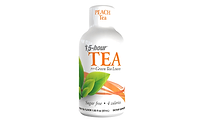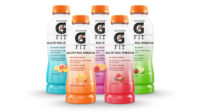Sports recovery, bone and joint health products gain traction
Protein, collagen fortification vital to beverage market

When it comes to consumer packaged goods, consumers are faced with myriad choices. Today’s market features beverages that are designed to help their bodies recover from a big game, manage age-related health concerns, or facilitate improved bone and joint function and mobility. As consumers of every age proactively manage their health, sports nutrition, and bone and joint health products have gone mainstream, experts note.
Whether it’s the highly trained athlete or the casual runner, more consumers are turning to beverages to support their workout regimens and recovery. “The sports recovery drinks market is growing strongly, without a doubt,” says Manel Romeu Belles, industry marketing manager at Denmark-based Arla Foods Ingredients. “The number of launches of new [ready-to-drink] (RTD) drinks with a sports and recovery claim on the label increased by 16.8 percent [compound annual growth rate] (CAGR) between 2012 and 2017,” he says, citing data tracked by the Netherlands-based Innova.
“More specifically, the number of launches of sports RTD drinks containing protein with the same label claim increased by 32 percent CAGR over the same period,” he continues. “Driving this growth is greater demand from consumers for more convenient ways to use sports nutrition products. RTDs are an excellent format solution. In addition, there is growing awareness of the benefits of protein for sports recovery among a wider consumer base.”
Between 2015 and 2016, new product launches for sports recovery products nearly doubled while slightly increasing between 2016 and 2017, says Meghan Wahlin, senior category manager at Carlsbad, Calif.-based Glanbia Nutritionals, citing Innova’s new product database. “We would attribute this performance to increased science and industry interest in this area, as well as increased consumer interest and recognition that recovery is an essential area of optimal fitness and health,” she says.
Manufacturers of sports recovery and sports nutrition beverages, powders and supplements should continue to innovate in order to meet diverse consumer need states, says Lara Niemann, marketing director at Gelita, Seargant Bluff, Iowa.
“From younger 20-somethings who require optimized everything, to middle-aged consumers who demand convenience and effectiveness to the most senior of consumers who demand products to help them maintain independence and freedom, the sports recovery market has its work cut out,” she explains. “Consumers demand efficacy (supported by science), clean labels, protein, taste, convenience, portability and diversity … [and] also expect the product to taste and smell good.”
Beefing up with protein
Among the factors driving the expansion of the sports nutrition industry is the increasing demand for protein fortification, a macronutrient that continues to resonate in the market.
Glanbia’s newest innovation, BevEdge Whey Protein A-220W is a pre-acidified whey protein ingredient designed to make citrus and berry flavors possible, creating new opportunities for sports and lifestyle protein powder brands, the company says.
“It is highly dispersible but [because it] contains no lecithin or soy, this unique protein ingredient provides the extra benefit of being clean label and contributing to a clear beverage, all while providing the muscle recovery benefits of whey,” Wahlin explains.
Grace Harris, director of new business and applications at Hilmar, Calif.-based Hilmar Ingredients, notes that new nutritional research and usage experiences are validating the use of clean-label, recovery-based products.
“Coffee and tea are seeing innovations, such as protein fortification and cold brew,” she says. “We are working with juice-based companies looking to extend their product line with coffee and tea, and who would like to use protein as a differentiation. Whey protein hydrolysate is our top pick for this application with its contribution to muscle development and its support for brown flavors.”
Like all beverage categories, consumers of sports nutrition beverages are looking for products that are low in sugar or sugar-free, Arla Foods’ Romeu Belles notes. He adds that active consumers view sports nutrition beverages, particularly protein-fortified products, as healthier alternatives to traditional beverages.
Aging better, living longer
With more consumers looking to enhance the quality of their lives with functional, better-for-you- beverages and supplements, beverage-makers are releasing more products to improve bone and joint health for weekend warriors and aging consumers.
According to the World Health Organization, the number of people aged 60 years or older will rise from 900 million to 2 billion by 2050 (increasing from 12 percent to 22 percent of the global population). By 2050, there will be 434 million people aged 80 years or order worldwide, it adds.
Yet, as consumers live longer, the prevalence of age-related health concerns, including osteoporosis, enhanced bone fragility and diminished joint function, looms.
“Consumers strive to live longer and better [lives],” says Heather Arment, marketing coordinator at Gelita. “… Gelita’s diverse and versatile portfolio of Bioactive Collagen Peptides support healthy aging from the inside-out.”
Among the products that Gelita offers to support bone and joint health are Fortibone, which improves bone mass density and supports bone stability and flexibility; and Fortigel, to support joint health and mobility.
Gelita’s Niemann adds: “While very similar, the sports recovery/sports nutrition category is a bit more nuanced than pure bone/joint health products. Within the sports nutrition market, protein … is the quintessential nutrient for athletes of all kinds.”
Collagen also is a key nutrient when it comes to muscle recovery, and bone and joint maintenance. Comprising 30 percent of total protein content in humans, collagen is the main structural component of various connective tissues, she says.
“Gelita’s collagen peptides are highly versatile, lending themselves to a host of applications and delivery systems,” Niemann says. “Powders continue to be popular for their convenience and portability.”
The market for collagen peptides is projected to exceed $800 million by 2019, according to Market and Markets.
In response, ingredient suppliers are piloting new ingredients in support of bone and joint health.
For instance, City of Industry, Calif.-based AIDP Inc. manufactures several ingredients to support mobility, joint health and exercise recovery. KoAct, a patented combination of collagen and calcium, is clinically proven to improve bone mineral density, bone strength and flexibility, says AIDP’s Business Development Director Samantha Ford.
Self-affirmed GRAS, KoAct is ideal for women who pursue active lifestyles or those concerned with bone health, Ford adds.
“KoAct’s unique collagen formula delivers more than bone mineral density,” Ford explains. “It provides a strong, flexible and fibrous protein network that supports bone structure and helps bone withstand daily impact.”
Within the sports recovery category, New York-based Kyowa Hakko USA manufactures Sustamine, a dipeptide ingredient that combines the amino acid L-Alanyl-L-Glutamine to help the body rehydrate, replenish and recover no matter how hard it is pushed, says Marketing Manager Elyse N. Lovett.
“Sustamine is clinically tested and produced through a patented fermentation method to create a unique dipeptide that is more easily absorbed by the body than complex protein molecules,” she explains.
“Recovery rehydration is always top of mine,” she adds. “Also products that promote muscle recovery are a huge market, especially [those that build] lean muscle mass.”
In 2017, Optimum Nutrition released ON Essential Amino Energy, a RTD beverage that contains 5 grams of amino acids, 100 mg of caffeine and Sustamine for consumers needing muscle recovery, energy and focus after a workout, Lovett says.
When formulating a beverage with sports recovery and bone/joint health ingredients, new products drive sales, according to Gwen Bargetzi, Hilmar’s director of marketing.
“Recovery is a ‘between’ market — it has advocates at the athlete level, but … it’s moving mainstream as new products emerge with different nutritional profiles and ingredients,” she says. “New drives sales, so we are always exploring what’s next. One area on our radar is the evolution of delivery formats in pouches, gels and shots. Flavors are a good place to look as well [as they] prevent palate-fatigue.” BI
Looking for a reprint of this article?
From high-res PDFs to custom plaques, order your copy today!







